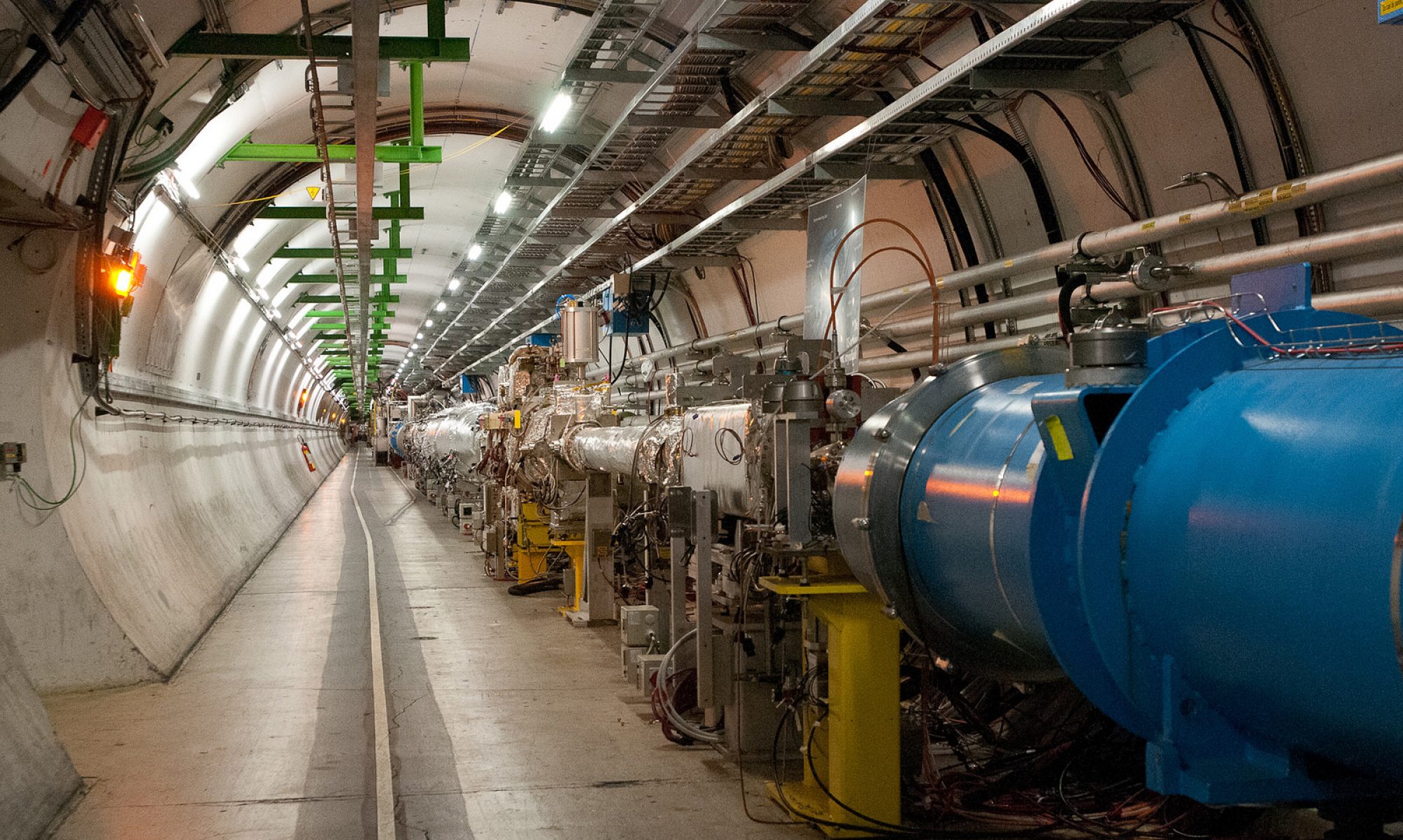Tom Wolfe, in his book “The Right Stuff”, asked “What is it that makes a man willing to sit up on top of an enormous Roman candle, such as a Redstone, Atlas, Titan or Saturn rocket, and wait for someone to light the fuse?” I look now at the giants ATLAS and CMS, and realize I wondered the same thing for a long time. Sitting on my little elephant, rich in a sea of data, I have long asked a similar question: “Who is willing to sit on top of ATLAS?”
This week, I attended my first ATLAS workshop. This is part of a process, one which will be very compressed for me (in some ways): orientation and familiarization with the ATLAS experiment, as I begin to think about a future rich in hadron collider physics. Moving from the flavor frontier to the energy frontier is, like all things in science, a process. For me, the ATLAS cosmic ray analysis jamboree at LBL was a very fun first step in that process.
I obviously won’t share the particulars of what I learned at the jamboree. I will say that I am already impressed by the care and methodology that went into designing the ATLAS tracking and alignment systems. Their advantages, and their mysteries, were on display at this workshop. The technical prowess needed to self-located all the parts of such a massive detector as ATLAS or CMS comes in many forms, and I was thoroughly impressed at the creativity of many of them. I see now one class of innovator willing to strap themselves atop the risky rocket to the energy frontier, and I’m glad for the fact that they did so. Ahead of colliding beam data, it’s clear that a tremendous amount of progress has been made in calibrating the detector using nature’s beam: cosmic rays.
While the alignment and calibration impressed me in the positive direction, the computing challenge facing the LHC experiments made me twitch a bit in the other. The sheer scale of this problem, facing all member states of ATLAS, will require a level of coordination and cooperation yet unseen in our field. But I also realized during the discussions of these issues that there is a tremendous willingness to solve the problem, though the path may not be entirely clear. The brainpower that has gone into trying to peer into the future of ATLAS computing leaves me wanting to know the future, just to see if they were right.
Computing, and demands on computing, are one of those “black swan” problems. All of your experience with past computing efforts is the guide to building a plan for the future; but, just because all past computing swans have been white is no guarantee that the next one you see won’t be black. A revolution in thinking in physics may put new, unexpected demands on the infrastructure and challenge the very assumptions of the computing model. How do you remain flexible and innovative in the face of the unknown? The black swan is alive and well.
There was also discussion of first physics analyses enabled by the cosmic ray data, and while I won’t get into the details I will say that the ingenuity and creativity of my new colleagues on ATLAS already impresses me.
My last comment on this new experience has to do with a sense of familiarity. For me, walking into a 2000 person collaboration could be the most daunting social experience of my life. It is made easier by the sheer number of familiar faces and names I encountered during this workshop. Old and recent BaBar colleagues, friends I’ve made on science advocacy trips to Washington D.C. – maybe 1/3 of the people at or presenting at this workshop were known to me. That gives a person comfort, to see old friends and know that making new ones won’t be that hard.
Light the fuse, I say.

